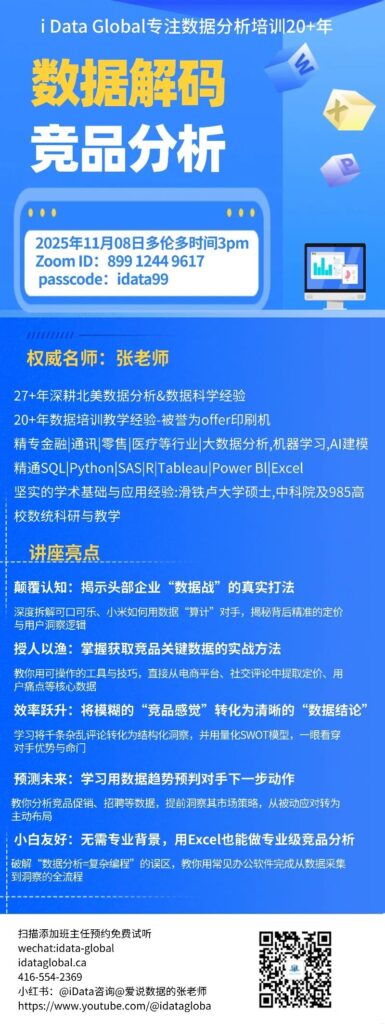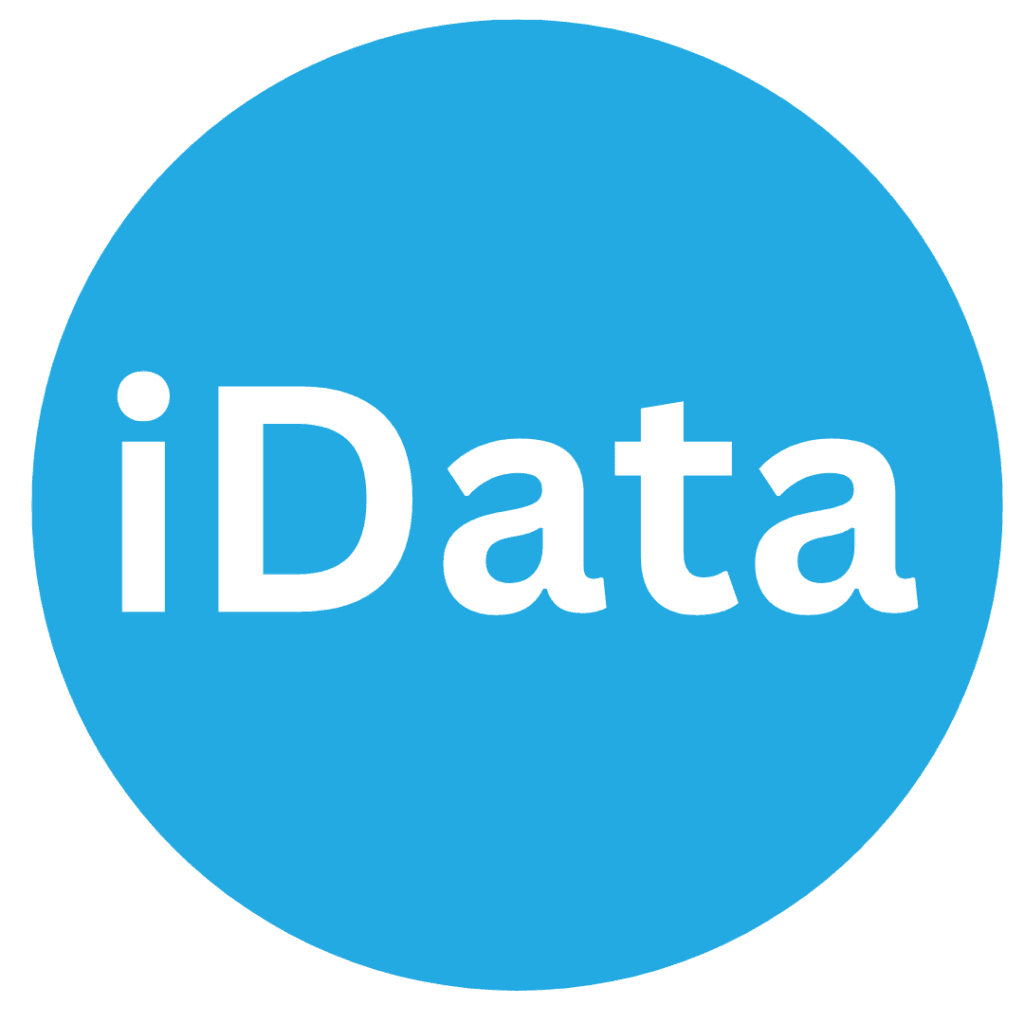Competitive Analysis

November 8, 2025 – Saturday Data Analytics Seminar] Your Competitive Report is still missing this “Data Decoder”!
Still Relying on “Guessing” Rival’s Pricing Strategy?
You’ve been looking through competitor reviews but can’t grasp the real pain points of users?
You want to find the market gap, but you don’t even know “where does the data come from”?
📅 When: Saturday, November 8, 2025
🕒 Toronto Time 3:00 PM
💻 Zoom: 899 1244 9617 | Password: idata99
🎓 O rganizer: “i Data” Data Thinking Seminar
💡 Core concept: Make data analysis your “business lens”.
This is not another talk about “analysis methods”, but a practical training to teach you to use data to see through the whole picture of the competition:
- What are the competitor’s advantages?
- What are the real dissatisfaction points of users?
- Which pricing range can accurately hit the competition?
You will learn to use data analysis to dismantle the opponent’s products, strategies and market layout, so that every decision stands on the shoulders of data, goodbye to blind imitation and ineffective efforts.
📈 Data-Driven Victory: Three Real-Life Cases
🥤 Case 1: “Precision Strikes Back” in the Beverage Industry
How Coca-Cola used data to win the “low-sugar war”?
The team crawled through Pepsi’s user reviews in the past 3 months and found that high-frequency bad reviews focused on “too sweet” and “easy to get fat”, accounting for 42%.
Combined with its own formula and cost data, it launched a “low sugar model” and priced it at 3 yuan, 0.5 yuan lower than Pepsi.
Only 1 month after the launch, it grabbed 15% share of the sinking market – this is a data-driven precision strike.
📱 Case 2|”Pricing game” in cell phone industry
How does Xiaomi become the “king of price-performance ratio”?
By crawling through the pricing data of Huawei and Apple models with the same configuration (Huawei 5999 yuan, Apple 6999 yuan), and combined with the cost analysis model to calculate their own profit margins, to determine the optimal price of 4999 yuan.
Then analyze the price sensitivity of competing users: 62% of users care about “the same configuration price difference of more than 500 yuan”, accurate card position, the first sale of a million units.
🍹 Case 3|Community Milk Tea Shop’s “turnaround against the wind”.
How can a small store use data to beat the old brand next door?
The owner recorded the rival takeaway data and found that during peak hours (18:00-20:00), the bad reviews focused on “slow delivery”.
So he launched the “order before 18:00 30 minutes must be reached” commitment; and then use the rival “less material” bad review data (accounting for 38%) to reverse to create a selling point — “20% more volume, not more”. “Increase the volume by 20% without increasing the price”.
Within a week, the customer flow back exceeded 30%.
These are not coincidences, but the power of data analysis.
Without data, competitor analysis is just a “blind guess”; with data, you can accurately find the opponent’s “fate”.
🎯 Three core links: from entry to combat
Session 1: Cognitive breakthrough
What competitor problems can data analysis solve?
- Find rivals more accurately: use user overlap to distinguish direct/indirect competitors.
- More efficient demand mining: target high-frequency pain points with keyword analysis of comments.
- More scientific pricing: Combine industry average price and cost data to calculate the optimal pricing.
- More timely action prediction: utilize recruitment and new product data to layout in advance.
Session 2|Methods
Five steps to teach you to make a professional competitor report:
- Data collection: free tools to get sales, pricing and review data.
- Data organization: Turn reviews into structured tables and classify and count the proportion of pain points.
- Data Comparison: Create a competitor comparison table to visualize performance differences.
- Trend Forecasting: Analyze historical promotion and inventory data to predict rival strategies.
- Report Output: Generate a visual SWOT table to identify strengths and weaknesses.
Session 3|Scenario
Provide directly reusable “data templates” for different positions:
| Role | Data analysis application scenarios |
|---|---|
| E-commerce seller | Extract keywords from competitor’s title (e.g. “skinny”, “versatile”) to optimize search ranking +30%. |
| Marketing Operations | Design high-conversion programs using participation and conversion data from competitors’ campaigns. |
| Product Manager | Analyze feature usage data to avoid ineffective feature development |
| Entrepreneurs | Analyze market share data to target uncovered segments of the population |
👥 Who should listen?
- 🧑💼 Entrepreneurs / small store owners: use data to dig the soft underbelly of competitors, small cost to grab the market.
- 📊 O peration / Marketer: use data to guide the design of campaigns to double the conversion rate.
- 💻 Product manager / e-commerce seller: Insight into user needs through data, to avoid ineffective development.
- 🎓 Career Newbie / Student: master data thinking to stand out in reports and interviews.
🚀 Conclusion: stop relying on feelings to make decisions
Let data support your business judgment.
📅 2025-11-08 Toronto Time 3:00 PM
💻 Zoom: 899 1244 9617 | Password: idata99
Learn to analyze data to see through competitors, so you can make more accurate, efficient, and smarter decisions every step of the way !









